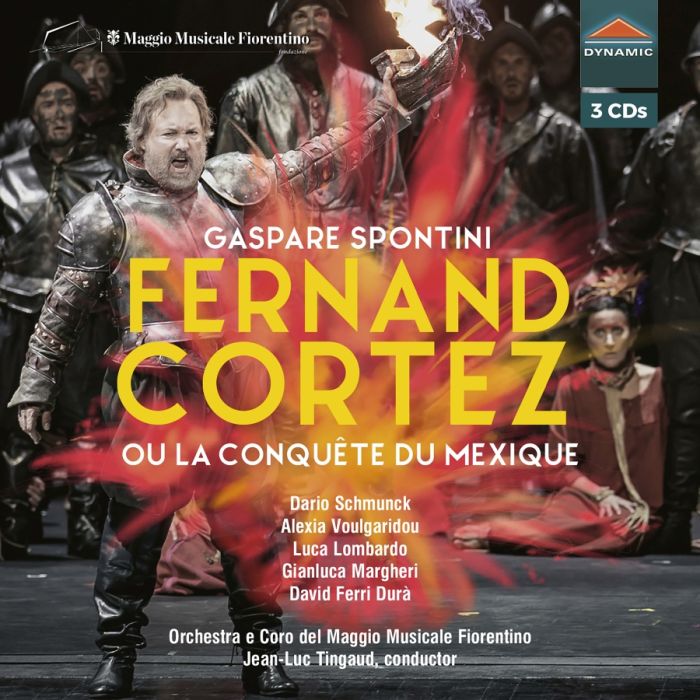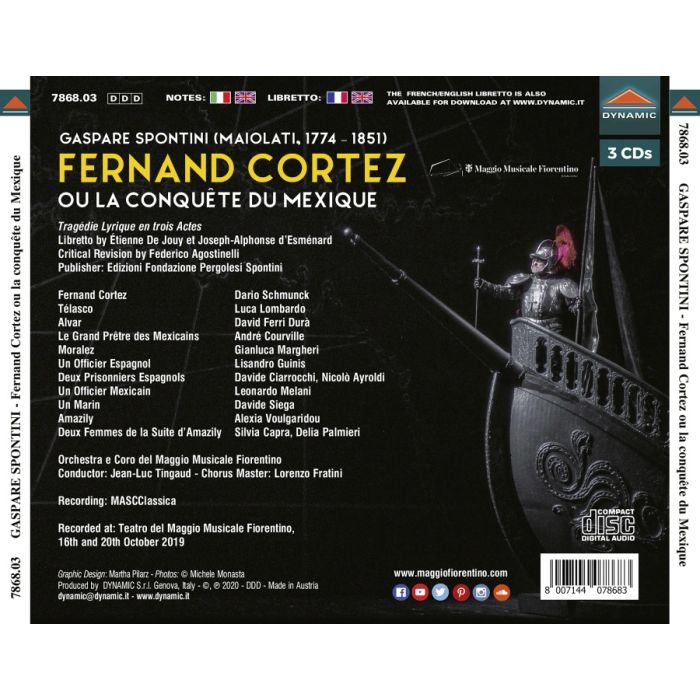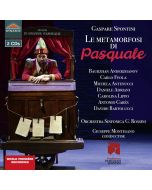
(Produkt nie został jeszcze oceniony)
kompozytor
Spontini, Gaspare
tytuł
Spontini: Fernand Cortez
wykonawcy
Orchestra e Coro del Maggio Musicale Fiorentino, Tingaud, Jean-Luc
nr katalogowy
CDS 7868
opis
After his Neapolitan training, Gaspare Spontini settled in Paris for a few years, where he was nominated “compositeur particulier de la chambre” of Empress Josephine, Napoleon’s wife. It was indeed Napoleon who commissioned Spontini to write the opera Fernand Cortez, ou La conquête du Mexique in 1808 and attended the premiere on 28 November 1809. • The choice of this subject is linked to the initial phase of the war against Spain, and departs not only from the actual historic events of 1519 but also from the 18th-century works on the same subject. • In the comparison between Spaniards and Mexicans, virtue, valour, tolerance and enlightenment are all qualities of the invaders. The strongly idealised figure of Cortez, presented as a brave, wise and merciful general, predestined to victory, was to be an image of Napoleon. His fight against Spanish “obscurantism” was Cortez’s fight against the cruelty, superstition and dark power intrigues of the Aztec (Mexican) sacerdotal class. • Cortez frees the Mexicans from their “evil god”, and only the High Priest refuses his clemency. Like in a pièce à sauvetage, at the last moment Montezuma’s niece, Amazily, who had offered her life in exchange of that of her beloved Cortez’s brother Alvar, is rescued (from being sacrificed by the High Priest to appease the gods’ wrath for betraying the Mexican cause). The Mexican chief Télasco, Amazily’s brother, promotes the cessation of hostilities: the marriage between Cortez and Amazily sanctions the peace between two peoples. • In Spain, the French troops met a very different fate than did Cortez’s men in the happy ending of Spontini’s opera, and it has been suggested that the disastrous outcome of the Spanish campaign was responsible for the limited number of performances of Fernand Cortez that took place in Paris between the end of 1809 and January 1812. Later on Spontini made a series of re-elaborations to his work, moving entire sections from one act to the other. The success of this opera is especially linked to its second version, staged in Paris in 1817. • This production is a recording of the first performance in modern times of the original 1809 version. It was recorded in October 2019, exactly 500 years after Cortez’s first arrival in Mexico. Fernand Cortez far transcends the limits of an occasional celebrative work. To quote conductor Jean-Luc Tingaud: “Spontini is between two worlds, the Ancien Régime and the French tragédie lyrique … But he invented a new style which would have been greatly admired by Wagner and Berlioz which opens the door to the romantic opera, which comes after." • Director Cecilia Ligorio drew inspiration from a murals painted by Orozco inside a building in Mexico city, where Cortez is depicted in shiny, silver armour, and Malinche – the historical figure who inspired the character of Amazily – wears no clothes and is painted with the natural, reddish colour of Mother Earth. • Cast: Fernand Cortez - Dario Schmunck, Télasco - Luca Lombardo, Alvar - David Ferri Durà, Le Grand Prêtre des Mexicains - André Courville, Moralez - Gianluca Margheri, Un Officier Espagnol - Lisandro Guinis, Deux Prisonniers - Espagnols Davide Ciarrocchi & Nicolò Ayroldi, Un Officier Mexicain - Leonardo Melani, Un Marin - Davide Siega, Amazily - Alexia Voulgaridou, Deux Femmes de la Suite d’Amazily - Silvia Capra & Delia Palmieri
nośnik
CD x 3
wydawca
Dynamic
data wydania
27.03.2020
EAN / kod kreskowy
8007144078683
95,00 zł
Produkt na zamówienie
Wysyłka ustalana indywidualnie.
Darmowa wysyłka dla zamówień powyżej 300 zł!
Darmowy kurier dla zamówień powyżej 500 zł!
sprawdź koszty wysyłki






